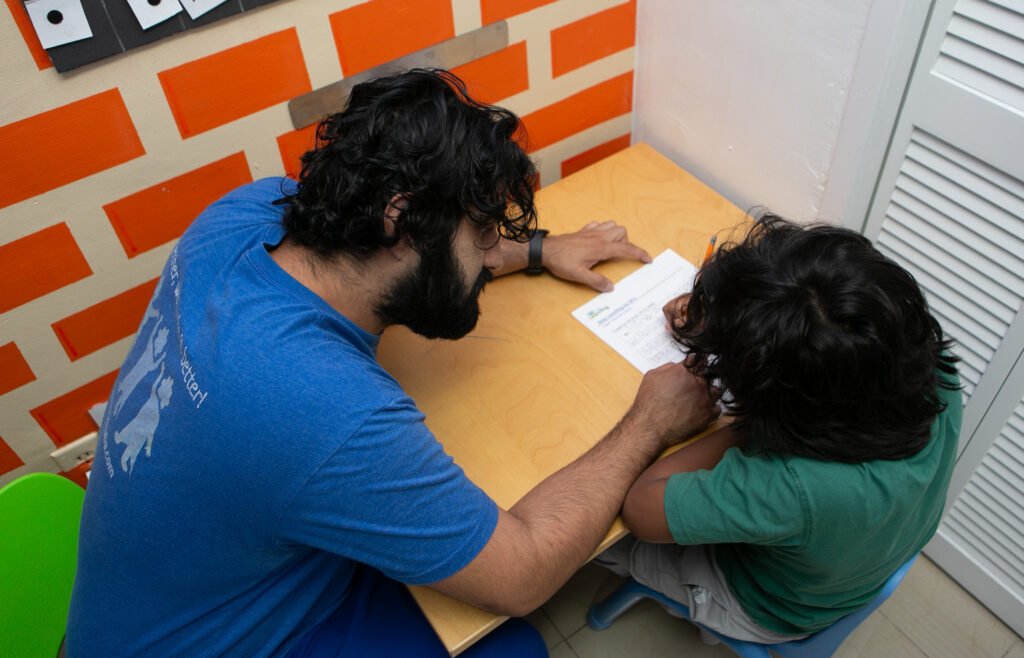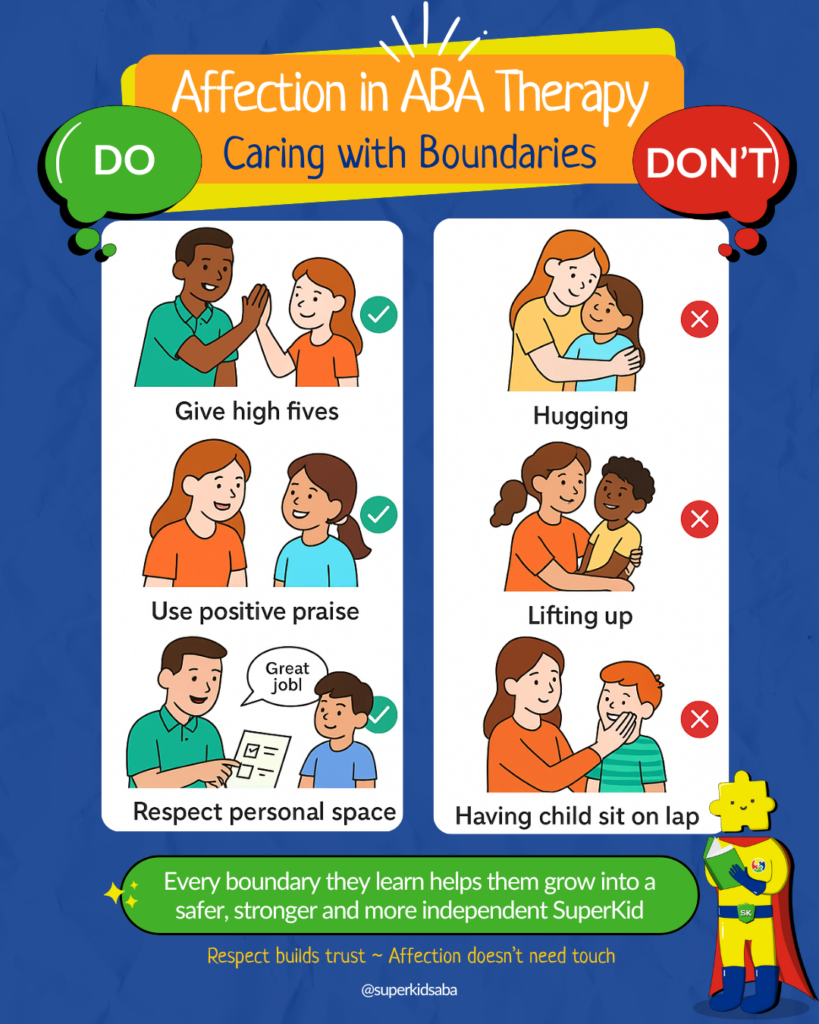
Affection matters deeply in a child’s development. But in clinical settings, especially in ABA therapy, affection must be shown through a different lens: a professional lens.
For ABA professionals working with children with autism, how affection is shown can either support long-term independence, or create confusion around personal boundaries and safety.
In this article, we’ll explore the power of professional affection in ABA therapy, and how showing care with intention (rather than instinct) can change a child’s future for the better.
Why Avoiding Physical Touch Can Protect a Child’s Growth
In many caregiving relationships, affection is equated with physical closeness: hugs, lap-sitting, or holding hands. However, in professional ABA therapy, those same gestures can unintentionally blur the lines of consent, safety, and ethical care.
Let’s break down why physical touch should be approached with caution:
- It can confuse boundaries between therapist and family roles
- It limits the opportunity for a child to say “no” or express discomfort
- It normalizes physical contact, which may make unsafe touch harder to identify in other settings
- It carries ethical and legal risks for both professionals and families
For those working in ABA therapy, understanding these risks is essential to providing care that’s respectful, consistent, and future-focused.
What Professional Affection in ABA Therapy Looks Like
We want to reframe affection and make a meaningful impact on the lives of SuperKiddos through our ABA Practice!
Professional affection in ABA therapy isn’t about withholding warmth, it’s about expressing it in ways that are safe, empowering, and effective.
For example:
- Using enthusiastic, behavior-specific praise
- Creating predictable routines that promote trust and reduce anxiety
- Engaging in goal-based, joyful play without physical contact
- Respecting a child’s space, especially when they signal discomfort
- Maintaining a warm tone, smiling, and celebrating effort
As a result, children learn to associate emotional safety with consistency, not just physical closeness.
Visual Guide: Affection with Boundaries in ABA
To help teams and families understand this approach at a glance, we’ve created a simple visual guide:

Every boundary a child learns today helps them grow into a safer, stronger, and more independent learner.
Respect builds trust ~ Affection doesn’t need touch.
Why Boundaries Are Critical for Children with Autism
Many children diagnosed with Autism have sensory sensitivities, communication challenges, or social processing differences. For them, professional affection in ABA therapy supports not just the child’s comfort, but their safety and autonomy.
Importantly, this approach teaches:
- Body ownership: “This is my body, and I decide what happens to it.”
- Consent: “I can say yes or no, and others must listen.”
- Safe relationships: “I understand what appropriate touch looks like.”
- Emotional regulation without dependency on physical soothing
While the effects may not be visible right away, they add up to lifelong tools for navigating school, group settings, and personal relationships.
How ABA Therapists Can Lead with Professional Affection
If you’re a BCBA, RBT, or team lead, here are ways to put this into action today:
🧠 Reflect on how you show affection in sessions—especially when children are upset or overwhelmed
🗣️ Replace touch with verbal praise, structured play, and energy-sharing
🧑🏫 Educate caregivers on the “why” behind professional boundaries
🤝 Align your clinical team around this shared philosophy
🧭 Seek guidance from leadership or BACB’s ethical code if unsure
When professional affection in ABA therapy becomes your standard, the whole care system becomes more respectful, safer, and effective for every child you serve.
Want to Go Deeper?
Looking to support independence in even more ways? Check out our guide:
✅ Why You Should Implement a Routine (for SuperKids with Autism)
It’s a practical resource for both ABA professionals and parents.
Ready to Grow, Lead, and Empower More SuperKids?
👉Looking for more tools, resources, and real talk for ABA professionals and families?
Explore our blog, join the conversation, follow us on LinkedIn or subscribe to our newsletter to get actionable strategies and clinical insights, delivered straight to your inbox.
💡 When we grow together, we empower every child we serve.
𝑇𝑜𝑔𝑒𝑡𝘩𝑒𝑟, 𝑤𝑒 𝑚𝑎𝑘𝑒 𝑖𝑡 𝑏𝑒𝑡𝑡𝑒𝑟! ✨